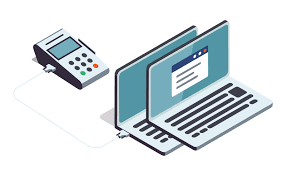How To Share COM Port Data Between Local And Remote Systems Effortlessly?
To share a COM port is to provide access to one computer or application on a network to a single serial device. Serial devices, such as barcode scanners, PLCs, or sensors, are traditionally connected to a single computer using an RS232 port. However, at most workplaces, several systems would require access to that device.
It is possible to share COM port and bring it out on a LAN or the internet by using a special program like Aggsoft TCP-Com. It allows remote computers to communicate with the same serial device without the need for extra hardware or complicated wiring, as though it were immediately connected.
Why should you have to share a COM port?
Most of the businesses still use legacy devices that utilize serial communication. An example is the manufacturing plants, laboratories, and logistic systems, which tend to rely on equipment that is serially connected to collect and monitor information.
When a single system has a commodity port access, it restricts productivity and control. It is possible to share the COM port so that more than one application or computer can be entitled to the same serial data. This ensures:
- Accessibility of equipment in various locations.
- Enhanced interdepartmental or inter-operational cooperation.
- This is improved monitoring of devices without disrupting current tasks.
What is TCP-Com Communication?
Communicating the data of the COM port is not a problem with the appropriate configuration. TCP-Com is a software that will provide a bridge between your serial device and the network. Here’s how it works:
- Install TCP-Com on the computer in which the serial device is physically connected.
- To broadcast the data of the COM ports on the network, define a TCP server connection in the software.
- In remote computers, a TCP client connection should be configured with the host IP address and port number.
- The remote systems can now be able to receive data on the shared COM port as though the device were being plugged in locally.
This arrangement does away with the additional cables, splitters, and hardware converters. The whole procedure can be performed in a few minutes, and no knowledge of programs is needed.
read more : https://prixdesmenus.com/
What are the key advantages of sharing the COM Ports?
Test software sharing of COM ports opens the door to several features:
- No hardware dependency: The whole system is configured by software.
- Accessibility to flexible network: Access by LAN, WAN, or the internet.
- Simultaneous access: Two or more systems can be fed with data simultaneously.
- Simple monitoring: Engineers will be able to monitor the performance of the devices remotely.
- Cost savings: You save on spending money on the expensive serial server hardware.
These characteristics render the process of sharing the COM port an effective way of data logging, automation, and industrial control.
Why would you use Aggsoft TCP-Com to share your COM port?
Aggsoft TCP-Com is one of the tools that can be used to the best when you want a simple and reliable means of sending serial data across more than two systems. It is easy to use, has a stable performance, and supports advanced logging features that enable you to track the flow of data in real-time.
Contrary to complicated network configurations, TCP-Com is automated so that your devices will remain connected without any loss of communication. You can share serial data in a secure and easy manner, whether you are controlling production equipment, remote sensors, or testing equipment using this software.
How Can You Get Started Easily?
It can be started with only a few steps. Download TCP-Com from the official site of Aggsoft and install it on your computer, and choose the configuration wizard. It takes just a few minutes before your serial device can be reached by a number of remote systems.
With a software-based solution (such as TCP-Com), you will be able to upgrade your communication system, minimize downtime, and save on efficiency without altering your hardware or software.







